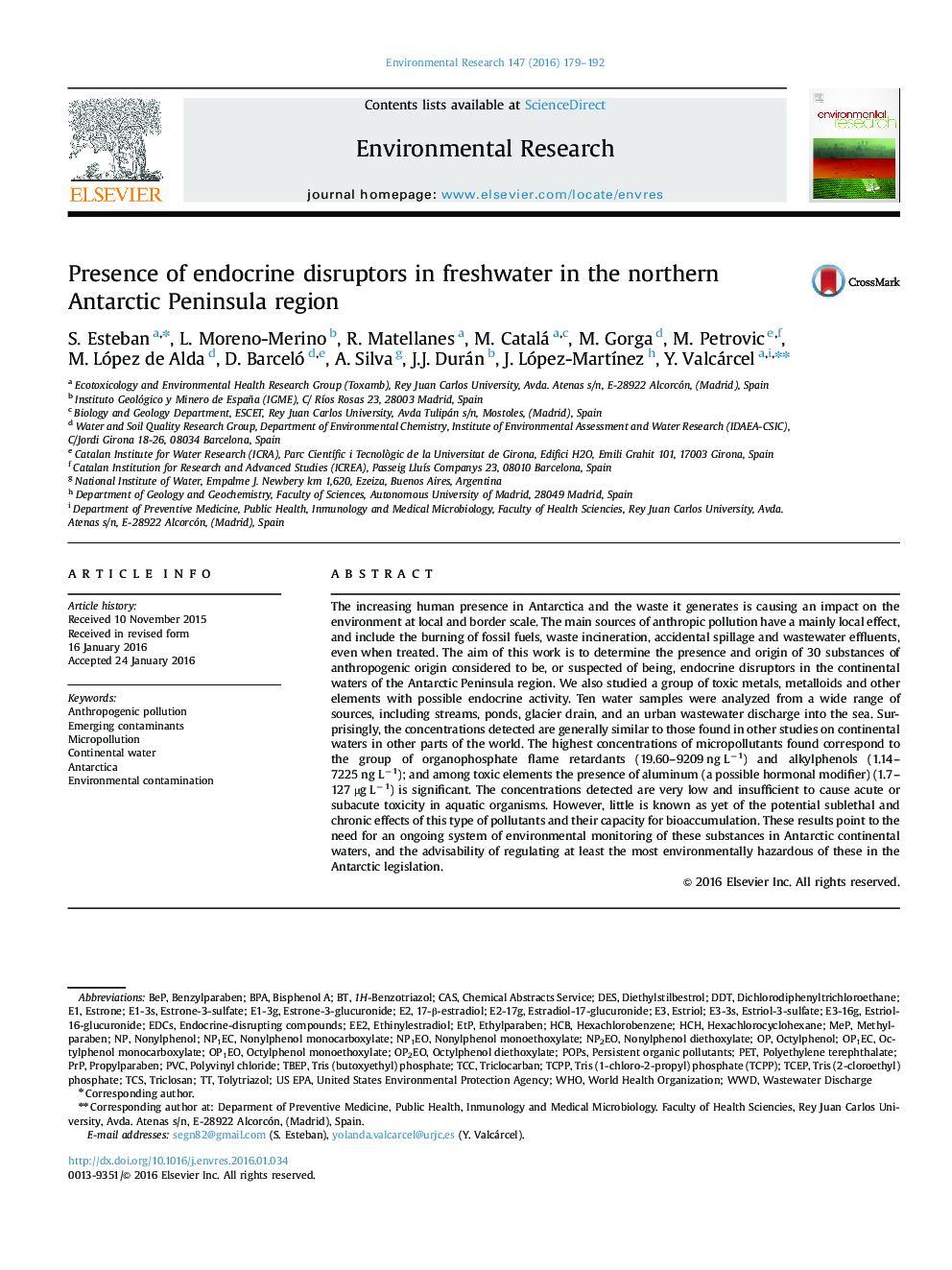| Article ID | Journal | Published Year | Pages | File Type |
|---|---|---|---|---|
| 6351700 | Environmental Research | 2016 | 14 Pages |
Abstract
The increasing human presence in Antarctica and the waste it generates is causing an impact on the environment at local and border scale. The main sources of anthropic pollution have a mainly local effect, and include the burning of fossil fuels, waste incineration, accidental spillage and wastewater effluents, even when treated. The aim of this work is to determine the presence and origin of 30 substances of anthropogenic origin considered to be, or suspected of being, endocrine disruptors in the continental waters of the Antarctic Peninsula region. We also studied a group of toxic metals, metalloids and other elements with possible endocrine activity. Ten water samples were analyzed from a wide range of sources, including streams, ponds, glacier drain, and an urban wastewater discharge into the sea. Surprisingly, the concentrations detected are generally similar to those found in other studies on continental waters in other parts of the world. The highest concentrations of micropollutants found correspond to the group of organophosphate flame retardants (19.60-9209 ng Lâ1) and alkylphenols (1.14-7225 ng Lâ1); and among toxic elements the presence of aluminum (a possible hormonal modifier) (1.7-127 µg Lâ1) is significant. The concentrations detected are very low and insufficient to cause acute or subacute toxicity in aquatic organisms. However, little is known as yet of the potential sublethal and chronic effects of this type of pollutants and their capacity for bioaccumulation. These results point to the need for an ongoing system of environmental monitoring of these substances in Antarctic continental waters, and the advisability of regulating at least the most environmentally hazardous of these in the Antarctic legislation.
Keywords
TCCdichlorodiphenyltrichloroethaneEE2ETPHCBHCHPrPCASMEPTCSBEPBPATBEPContinental waterTCPPNonylphenol diethoxylate17-β-estradiolEDCsUS EPAEmerging contaminantsPOPsPersistent organic pollutantsAnthropogenic pollutionEnvironmental contaminationUnited States Environmental Protection AgencyethylparabenEthinylestradiolDESEstroneestrone-3-sulfateestrone-3-glucuronideestriolOctylphenolHexachlorobenzenebenzylparabenBisphenol AWastewater dischargeEndocrine-disrupting compoundsTriclosanTriclocarbanChemical Abstracts ServiceDiethylstilbestrolDDTWorld Health OrganizationTCEPAntarcticaMethylparabenNonylphenol monoethoxylateNonylphenolHexachlorocyclohexanePETPropylparabenPolyethylene terephthalatePVCPolyvinyl chlorideWHO
Related Topics
Life Sciences
Environmental Science
Health, Toxicology and Mutagenesis
Authors
S. Esteban, L. Moreno-Merino, R. Matellanes, M. Catalá, M. Gorga, M. Petrovic, M. López de Alda, D. Barceló, A. Silva, J.J. Durán, J. López-MartÃnez, Y. Valcárcel,
